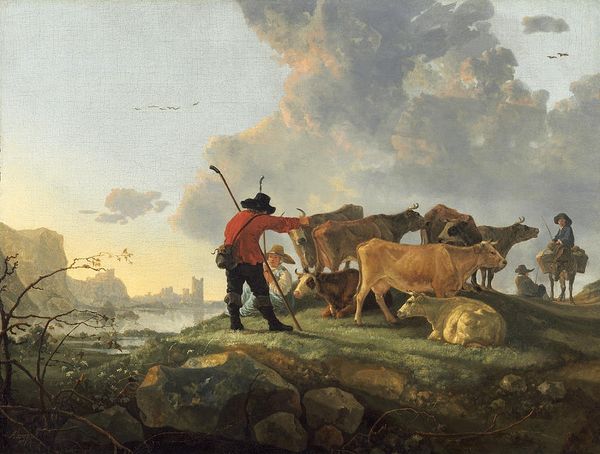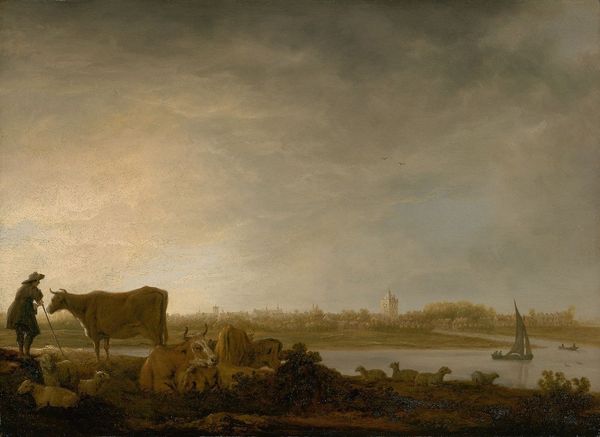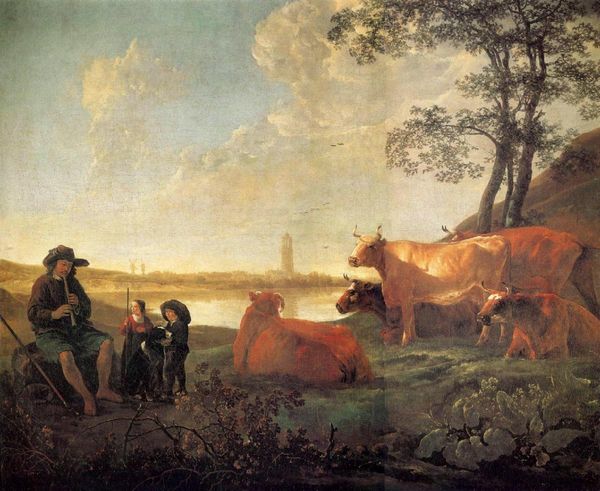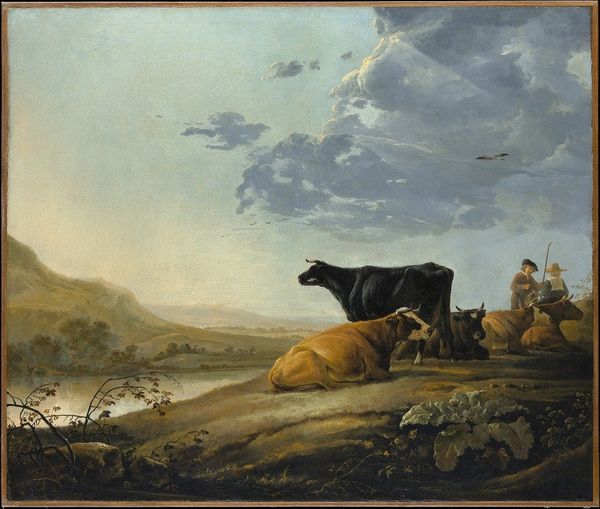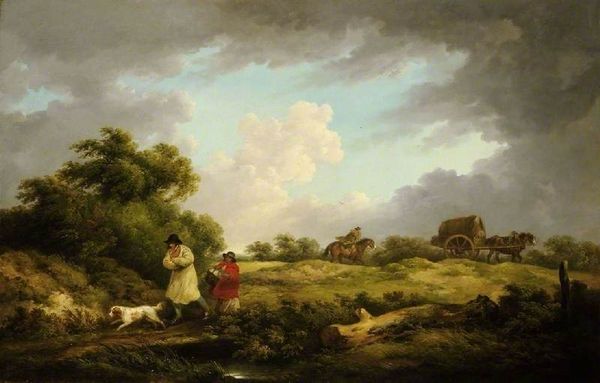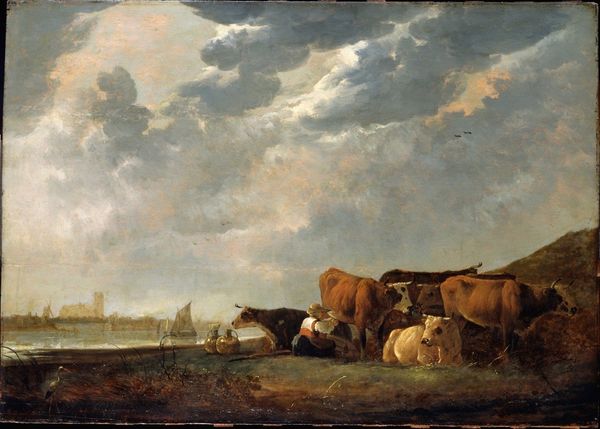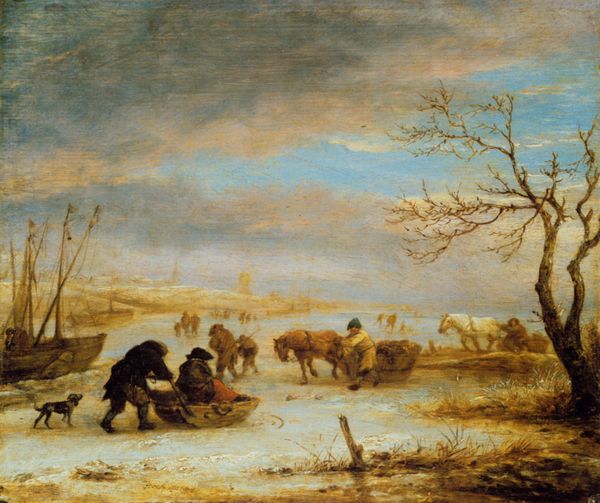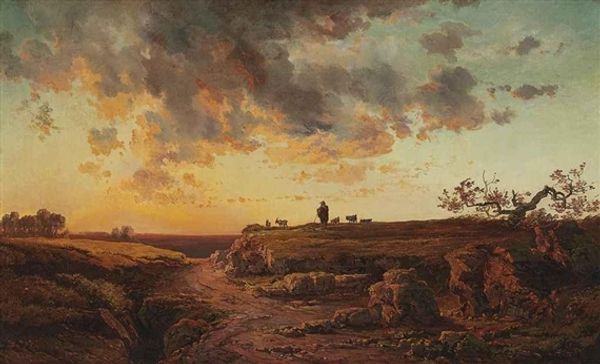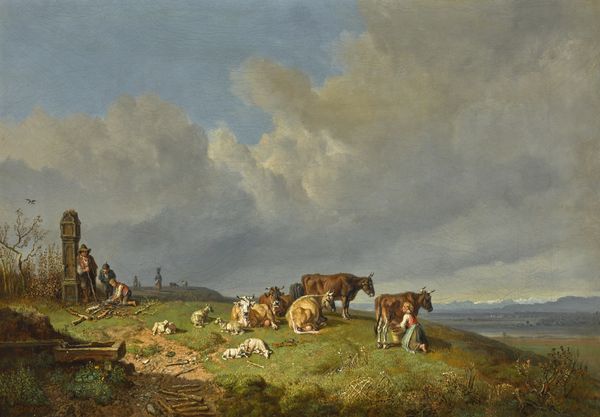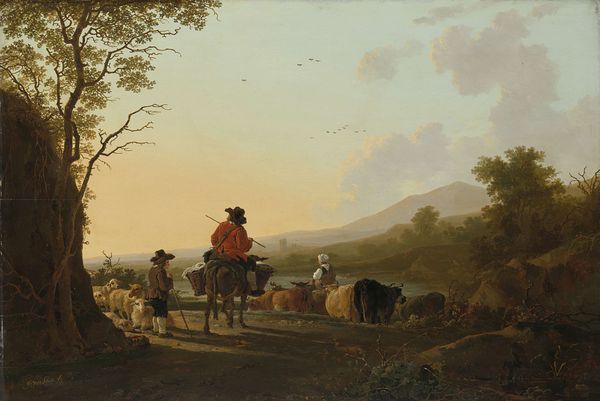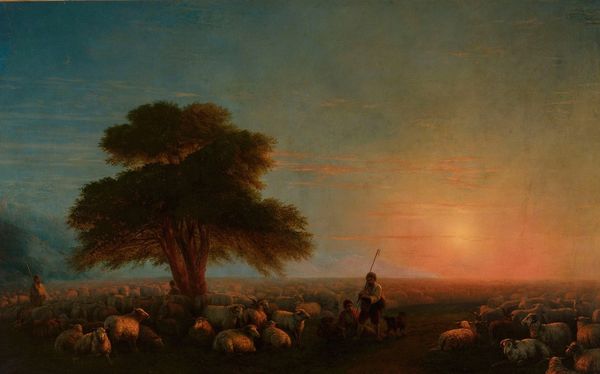
painting, oil-paint
#
dutch-golden-age
#
painting
#
oil-paint
#
landscape
#
figuration
#
oil painting
#
genre-painting
#
realism
Copyright: Public domain
Curator: Let’s take a moment to observe “Flock of Sheep at Pasture,” an oil on canvas executed around 1655 by Aelbert Cuyp. Editor: It evokes a profound sense of tranquility, wouldn't you agree? The horizontal composition lends itself to a soothing visual experience, almost as if inviting the viewer into a contemplative pastoral dream. Curator: Indeed. And that placid quality, in part, stems from Cuyp’s clever rendering of light. Consider how the sunlight gently caresses the wool of the sheep, each carefully placed impasto dab creating nuanced shadows. This creates a striking textural contrast that enriches our experience. Editor: But let's also think about what these scenes represent. During the Dutch Golden Age, paintings like these were not just decorative. They functioned as a display of wealth and national pride, weren’t they? A burgeoning merchant class wanted to signal its prosperity. This is less about individual sheep, but the economic realities tied to agrarian wealth. Curator: Certainly, such works reflect Dutch society’s emphasis on commerce and agriculture. Cuyp presents the idealized and fertile Dutch landscape as a prosperous, self-sufficient entity through meticulous brushwork and tonal variations to emphasize light, form, and texture, bringing depth. Editor: What I find interesting is the way it balances realistic representation and an idyllic fantasy. Even the cloudy sky seems to hold its breath, creating an atmosphere far removed from the political and social tensions that were almost ever present in the background. Curator: An acute observation. One might interpret that to represent how this work, through the employment of calculated artistic decisions in pictorial space and manipulation of visual elements, encourages introspection regarding nature, pastoral existence, and pictorial construction itself. The scene’s formal characteristics supersede social or political considerations. Editor: To be sure, but remember the Dutch Republic’s struggle for independence against the Spanish Empire during the 17th Century. Landscape art provided a space to develop and negotiate notions of national identity—that cannot be overstated! Curator: Perhaps there can be room for both, then? Cuyp creates visual interest using aesthetic strategies but cannot exclude an appeal toward the culture it comes from. It seems there can be layers in visual experience. Editor: Precisely. These images often function in intricate negotiations and sometimes celebrate social cohesion and stability by simply representing ordinary citizens in their homeland, a subtle commentary but a vital reminder for viewers across time.
Comments
No comments
Be the first to comment and join the conversation on the ultimate creative platform.
